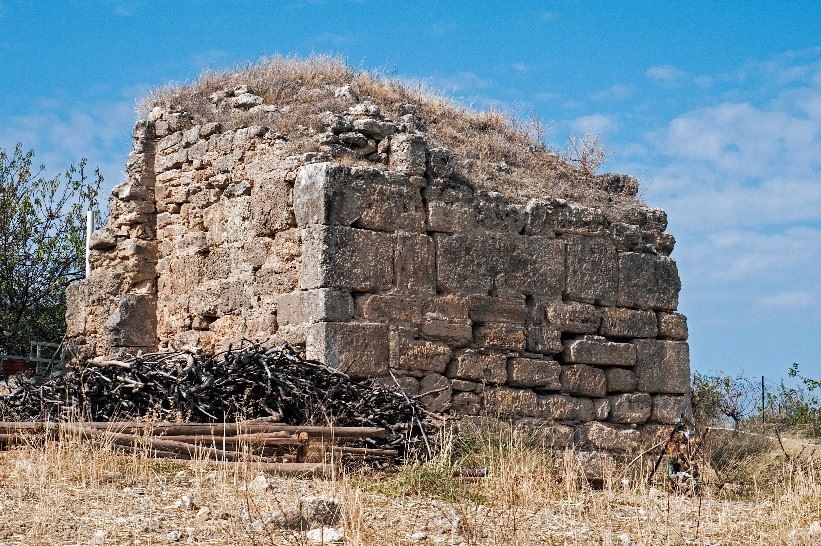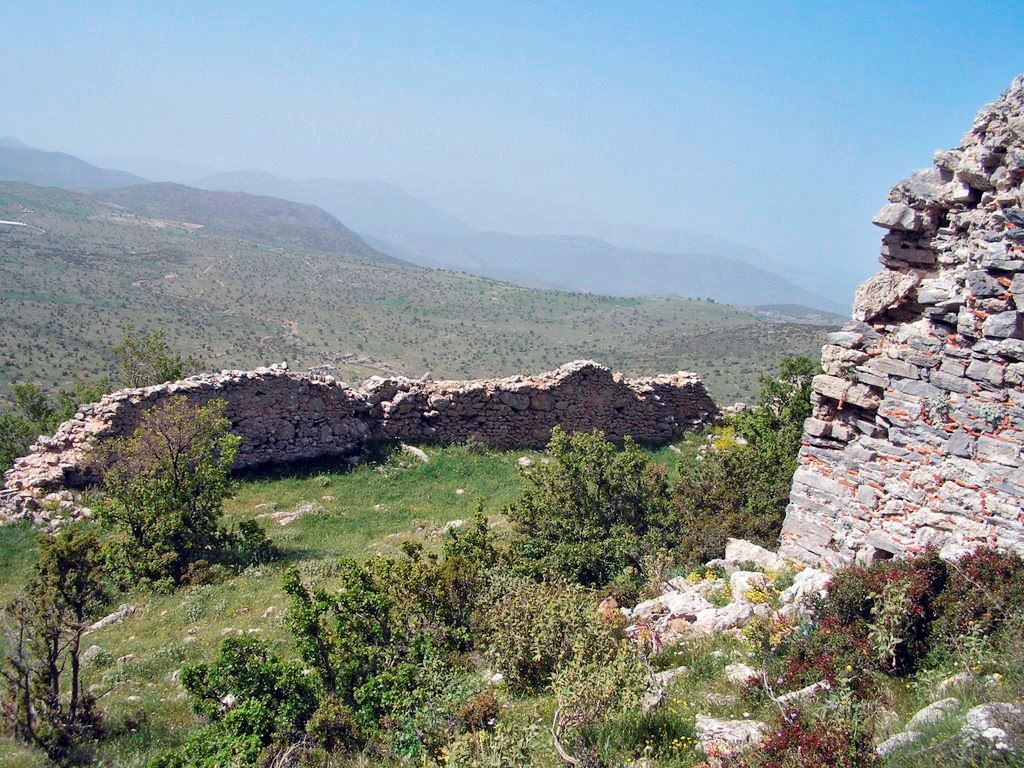THE LOCATION OF GUILLAUME II DE VILLEHARDOUIN’S CASTLE OF GRAND MAGNE (MEGAILI MAINI), Michael Heslop
In the present stage of my research into the location of Guillaume II de Villehardouin’s castle of Grand Magne (Megaili Maini), I have examined other fortifications supposedly built by him around 1256. According to the Aragonese Chronicle of Morea, these included the castles of Vasilicata and Estella. The purpose of the examination was to ascertain any common characteristics which might have been replicated at Grand Magne.

Vasilicata or Vasilica, formerly known as Sikyon, is the name given to the village on the south-eastern edge of the plateau facing Corinth. An important site in antiquity, the walls there were clearly re-utilized, with repairs and additions sometime before being mentioned as a fortification again in the late 1330s.
A tower and walls survive at the site. A previous investigator has suggested that Villehardouin may have repaired the tower by adding on medieval courses above the Hellenistic foundations. But a closer examination shows that the tower seems to have been entirely reconstituted, as the Hellenistic blocks are not always located at the bottom of the tower (see photo).
In other words, the tower, surrounded by thirteenth-century glazed pottery, was built using various surviving Hellenistic blocks in the area – it was not built on the foundations of a pre-existing tower.
Estella or Astritzi is universally agreed to be the Kastro tis Orias located near Aghios Ioannis in Kynouria. The remains of the castle stand on a cone-shaped hill about 250 metres above the surrounding plateau. It protects the northern exit from the main mass of the Parnonas-Malevos Mountains, the home at the time of the Tsakonians, whose raids Villehardouin was trying to minimise by building the castle.
Sections of its two walls, the outer one unworked, survive and encircle an impressive tower-keep at the top of the hill (see photo below).
The entire site, which includes the remains of houses, is covered with shards of thirteenth-century glazed pottery; there are no signs of an earlier construction.
My conclusion from examining these two sites is that they shared the common features of being built on high hills and possessing a tower or keep, as well as overseeing comprehensive sight-lines. Whereas Kastro tis Orias was built from scratch, Vasilicata re-utilized and entirely rebuilt pre-existing fortification components.
My article on Grand Magne is being included in a forthcoming Crusades Subsidia volume entitled “Crusading and Archaeology”.
